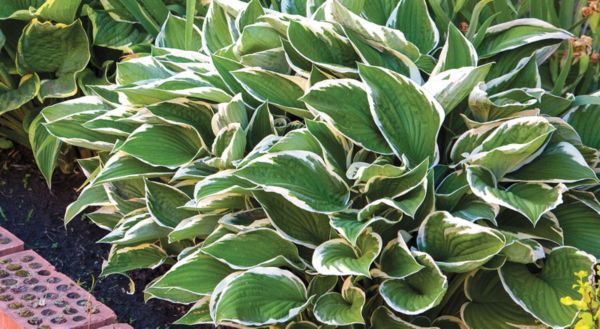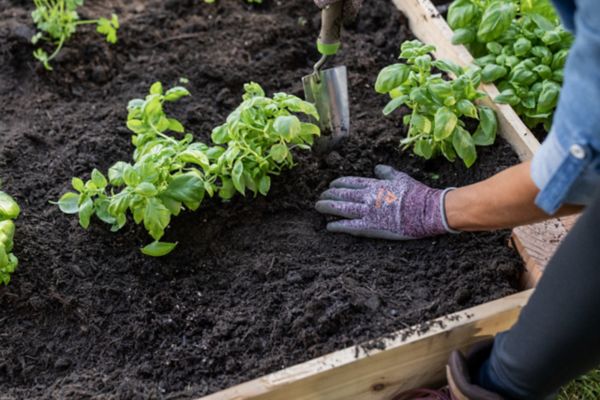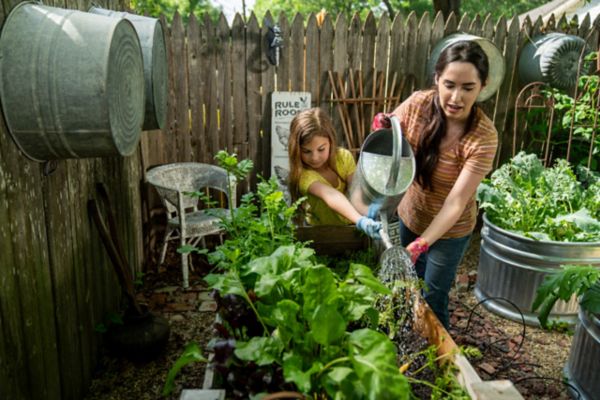How to Grow Corn
Authored by Leah Chester-Davis
No matter how you enjoy it – in salads, chowders, fritters, breads, succotash, seafood boils, casseroles, grilled, boiled, roasted, or fried – corn is best fresh from the garden.
The sweetness of freshly harvested and prepared corn is part of what summer is all about. That fresh-from-the-garden flavor is something to look forward to year-round. Perhaps that is why sweet corn is one of the most widely grown vegetables in the country. It’s also highly sought out at farmers markets and roadside stands.
Sweet corn differs from field or dent corn, which is grown to feed livestock or to be ground into cornmeal. Sweet corn is favored for its sweetness or sugar content along with the creamy texture of its kernels. There are many varieties, and each region of the country seems to have its own favorite.
It is delicious left on the cob and lightly boiled and then buttered, roasted in the oven, or grilled in the husks to get a smoky, charred flavor. Another favorite way to prepare is to cut the kernels from the cob and scrape the milk into a dish and then sauté together in butter or bacon grease. Some folks add plenty of garlic and season with salt and pepper. Others sauté the kernels in butter and add milk and sugar. Roasted corn kernels combined with black beans, tomatoes, onion, and cilantro and mixed with a rice vinegar, lime, and olive oil vinaigrette is a summer salad that’s hard to beat.
About corn
| Botanical name: | Zea mays |
| Common name: | Corn |
| Plant type: | Grass |
| Size: | 5 to 6 feet |
| Sun exposure: | Full sun |
| Soil type: | Deep, fertile, well-drained, sandy loam |
| Soil pH: | 5.8 to 7 |
| Hardiness zones: | 2 to 11 |
| Average first frost: | Varies by region |
| Average last frost: | Varies by region |
| Container friendly: | No |
| Beginner friendly: | Yes |
Growing
This warm-weather crop needs plenty of room to grow. It grows in most soil types, but the soil needs to be well drained and well worked to 10 to 12 inches deep. Corn grows tall, about 5 to 6 feet tall, and for adequate pollination at least 12 plants are needed. Because it self-pollinates or is pollinated by a similar variety, it’s important to position plants to take advantage of how the wind may move corn pollen to various parts of the plant and from plant to plant. Avoid planting in one long single row, and instead plant corn in at least four short rows, forming a block or square of corn.
Another important consideration is placement of the corn plants in the garden. When you lay out your garden, give corn a spot where it won’t completely shade other plants. It also needs plenty of water so positioning your garden near a
Many varieties are available but to avoid cross pollination you will need to isolate them by planting them far apart, which means you need a big space. Or you can isolate by planting varieties that produce pollen at different times. If you are just getting started, consider growing just one type of sweet corn and then you won’t have to worry about cross pollination, which can affect sugar levels and appearance.
Corn is one of the three plants, along with beans and squash, known as the Three Sisters, which draws on the wisdom of Native Americans and dates back thousands of years.
Sweetcorn and sugar content
When selecting varieties, you likely will come across information about the sugar content: Su is considered standard or normal; Se or sugar enhanced; Se+ are a little sweeter, thanks to cross breeding two Se parents; Sh2 is sometimes called supersweet and the sugar in these varieties is converted to starch more slowly, which mean they will stay sweeter for a longer period; and Syn or synergistic has genes from all three.
Planting
Corn is happiest in warm weather so plant when the soil has warmed to at least 60 degrees F. A soil thermometer available in garden centers helps get an accurate reading. Corn needs to be in a spot that receives 8 or more hours of sunlight each day. Add plenty of organic material to the soil to help drainage and, before planting, get the soil tested to decide whether other amendments may be needed. In the absence of a soil test, Michigan State Extension recommends applying 2 pounds of 5-20-20 fertilizer per 100 square feet (about the area of an apartment bedroom) of soil.
Sow the seed into the soil, about 1 inch deep and 8 to 12 inches apart. The rows should be 30 to 36 inches apart. Plant in at least four short rows; more if possible.
This crop needs about an inch of water per week, depending on your soil. Water at the base of the plant. Sandy soil may need more. For the best guide on how much your soil needs, do a simple test after an inch of rainfall or irrigation. Test the moisture level of your soil by pushing a trowel or small shovel into it. Sandy soil should be wet to about 8 to 10 inches and clay and other soils to about 6 inches. If the soil is wet to only a couple of inches, continue watering.
To have a continuous supply of sweet corn through the summer, plant two weeks apart over a period of a few weeks.
Corn does not like competition from weeds and grass. Keep them to a minimum by using a hoe and being careful to avoid injuring shallow roots. A better choice to suppress weeds is to use mulch such as straw. It also helps hold in moisture. Use it on pathways and between rows, too.
Fertilizing
In addition to adding fertilizer at the time of planting (see above), corn will need a side-dressing of fertilizer when it is about 1 foot tall. Michigan State Extension recommends a high nitrogen fertilizer such as 4 pounds of 21-0-0 or 2 pounds of 46-0-0 per 100 square feet (about the area of an apartment bedroom). Apply along the rows, use a hoe to scratch it into the soil, and water thoroughly.
Avoid using any fertilizer that has a weed killer.
Controlling Pests, Diseases, and Other Problems
The corn earworm and the European corn borer are a couple of insects that feed on developing ears of corn. Bacillus thuringiensis (Bt), can be used during early larval stages. Bt is a naturally occurring agent that is nontoxic to humans and pets. Follow label directions and apply as soon as you spot any evidence of masses of tiny white or dark eggs on the corn. Missouri Extension recommends mineral oil mixed with Bt to control corn earworm. It does not harm beneficial insects and doesn’t affect corn for later consumption. Apply the mixture to the ear's tip by hand on each silk about two days after it emerges from the ear. Applying the oil earlier may reduce pollination. This method can be effective for small plantings only as it is labor intensive. It is not uncommon to find a few ears damaged at the tips. Simply cut away that part of the ear.
Four-legged pests can be a real problem. Raccoons, groundhogs, and deer often consider a corn crop as a personal invitation to dine. Fences may be the best way to protect your garden.
Harvesting and Storing
Depending on the cultivar, days to maturity typically range from 63 to 100. When buying seed, note the maturity date of the cultivar you plant.
When the silks appear, that is a sign that harvest time is getting closer, likely about 18 to 24 days (about 3 and a half weeks), depending on the weather. When the silks are dry and brown and the ears feel full when squeezed, it is likely time to harvest. The husks should appear fresh and green, not dried out. Pull one of the ears of corn from the plant and remove the green husk. The kernels should be round, full, and milky. Use a thumbnail to puncture a kernel. If it is milky, it’s ready to harvest. If it is clear, it may need a few more days to mature. Corn will remain in the milky stage for a few days but typically less than a week.
To harvest, snap off the ears with a quick downward push, twist and pull. After harvest, cut or pull the cornstalks and add to the compost pile. Cut into short lengths for faster decomposition.
Storing
Corn is at its best just after picking, before the sugars convert to starch. To store, keep in the husk and store for only a few days in the refrigerator.
Freezing is among the easiest and most popular methods of preserving the home-grown goodness for enjoyment year-round. It’s easy to freeze corn-on-the-cob, whole kernels, or cream-style. A helpful, reliable guide for freezing and canning is the National Center for Home Food Preservation.
Depending on the cultivar, days to maturity typically range from 63 to 100.
Expert Tips
- Check with your local garden center, farm store, or Extension office about the best cultivars for your region. In addition to sweetness levels, corn is divided into early, mid-season, and late varieties and there are yellow, white, and bicolor cultivars.
Frequently asked questions
What is the difference between early- and late-maturing varieties?
Early varieties typically produce smaller ears and are less sweet. They may be the best choice in areas where the growing season is short, and temperatures are cool. Late maturing varieties are better adapted to long seasons and warm temperatures.
Will old seed germinate?
It depends on how it was stored and how old it is. Typically, germination rates decline as seeds get older. If they have been stored in cool, dry conditions, or even refrigerated or frozen, they may last more than one year.
How far apart should I plant different varieties of corn to prevent cross pollination?
Tennessee Extension recommends isolating different corn varieties by planting them 100 yards or more apart or by timing plantings so each sheds pollen at a different time.
Does corn need to be rotated each year?
One way to prevent insect and disease problems is to rotate crops. Changing where you plant corn from one year to the next may be beneficial.





